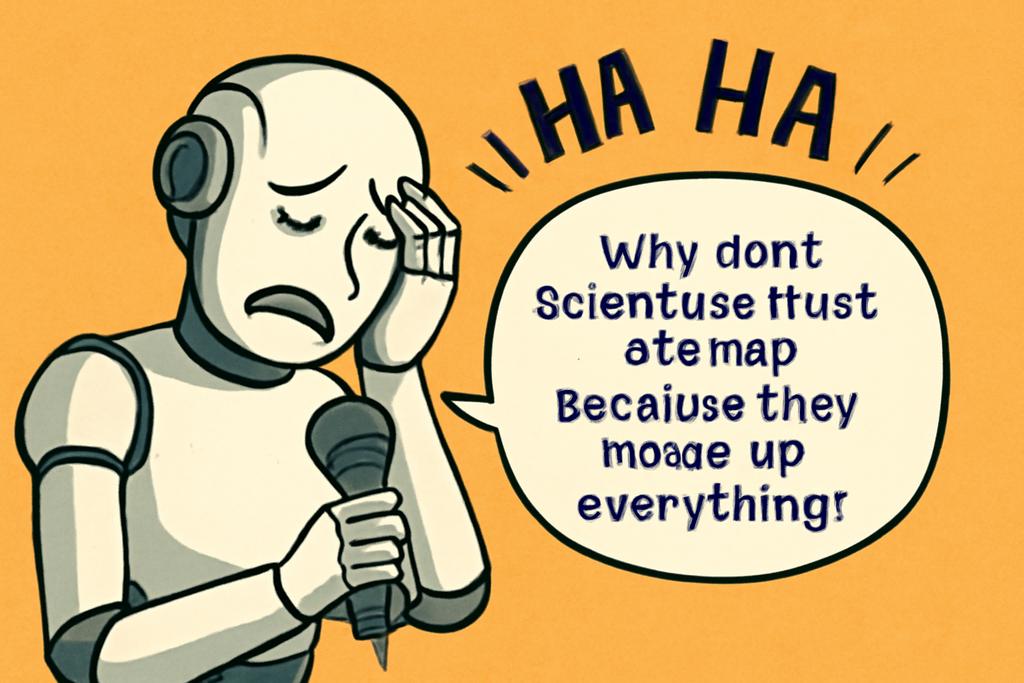Can a machine truly understand a joke? It’s a question that probes not just the limits of artificial intelligence, but also the very nature of human wit. Researchers at the University of Sheffield and the University of Manchester recently tackled this question, revealing some surprising limitations in even the most advanced language models’ ability to grasp the nuances of humor.
Beyond Simple Puns: The Challenge of Context
For years, AI researchers have focused on relatively straightforward forms of humor, primarily puns. These are jokes built on the double meanings of words, or on words that sound alike but have different meanings. Think of the classic “Why don’t scientists trust atoms? Because they make up everything!” These jokes, while clever, are fairly self-contained; understanding them requires only a grasp of basic wordplay and semantics. But much of the humor we encounter in everyday life—from stand-up comedy to online memes—is far more complex. It’s often rooted in cultural context, topical events, or shared knowledge that’s not explicitly stated.
Tyler Loakman, William Thorne, and Chenghua Lin’s research directly addresses this gap. Their study dives into the chasm between simple puns and the more sophisticated forms of humor that depend on an understanding of the world around us. It’s like the difference between solving a simple riddle and understanding a complex metaphor. They’ve designed a dataset of 600 jokes, carefully categorized into four types: simple homographic puns (playing on similar-sounding words with different meanings), heterographic puns (using words spelled differently but pronounced the same), non-topical internet jokes, and topical jokes tied to current events or pop culture.
Testing the Limits of AI Humor
To assess AI’s ability to ‘get’ these jokes, the researchers used eight state-of-the-art language models. These weren’t just your average chatbots; they were some of the most powerful and sophisticated AI systems available. The models were presented with the jokes and asked to explain *why* they were funny—a task requiring more than simple recognition of a chuckle-worthy text. The responses were then graded by human judges, using a rubric that assessed both the accuracy and completeness of the explanations. The researchers also used an additional language model to independently assess the generated explanations.
The Results: A Comedy of Errors
The results were, frankly, humbling. While the language models excelled at explaining the simplest jokes—the puns—their performance plummeted when faced with jokes requiring a deeper understanding of context. The models consistently struggled to explain jokes that relied on topical knowledge or cultural references, often missing the key elements that made the joke work. It’s as if they were seeing the punchline but missing the setup entirely.
One surprising finding was that even the largest and most powerful language models didn’t consistently outshine their smaller counterparts in explaining the more complex jokes. Size wasn’t everything. In fact, one specialized ‘reasoning’ model performed poorly, suggesting that raw processing power isn’t sufficient for humor comprehension. It seems understanding jokes requires a different kind of intelligence—one that goes beyond mere pattern recognition.
Why This Matters: More Than Just a Giggle
This research isn’t just about AI’s ability to tell jokes; it highlights a broader issue about how we’re approaching AI development. The study’s focus on different types of humor reveals the limitations of datasets skewed towards easily-processed information. If we train AI primarily on easily-digestible data, we risk creating systems that are brilliant at simple tasks but fall short when faced with the complexities of human communication.
Moreover, understanding humor requires sophisticated reasoning, cultural sensitivity, and a vast knowledge base. This challenges the prevailing idea that simply scaling up AI models will inevitably lead to human-level intelligence. Humor, it turns out, is a complex beast, and requires more than just brute force computation.
The Future of AI Humor (and Beyond)
This research is a wake-up call. It shows that building truly intelligent AI requires more than just massive datasets and powerful processors. We need to rethink how we train and evaluate AI, moving beyond simple benchmarks towards more nuanced assessments that capture the richness and complexity of human thought and expression. The pursuit of AI that truly understands humor is a journey that leads us to a deeper understanding of intelligence itself.










